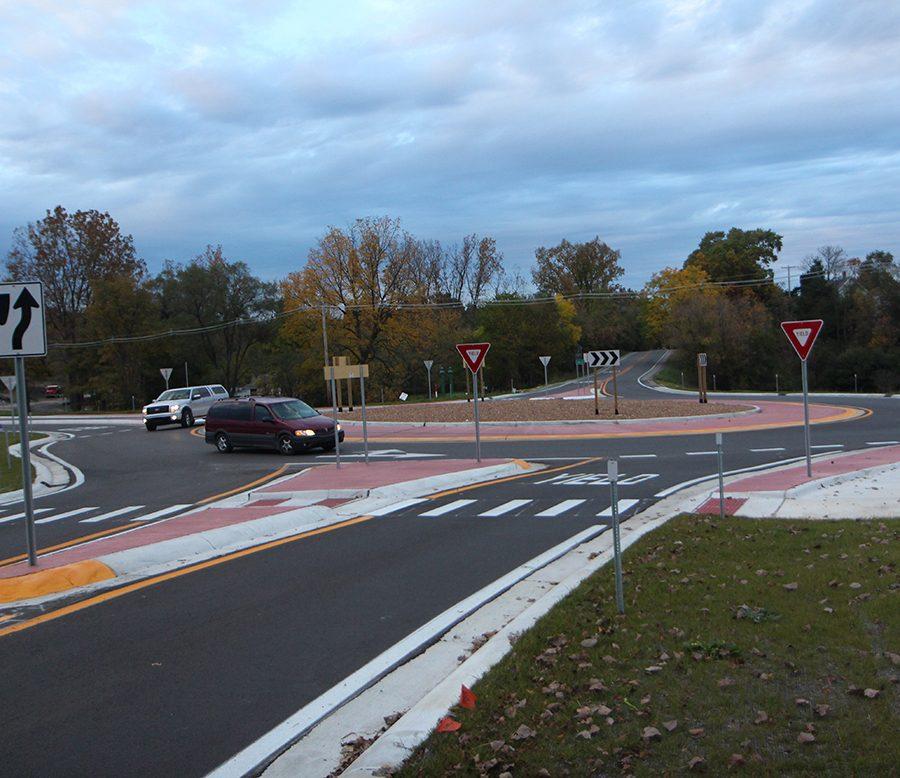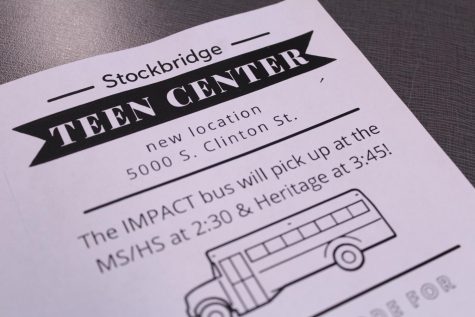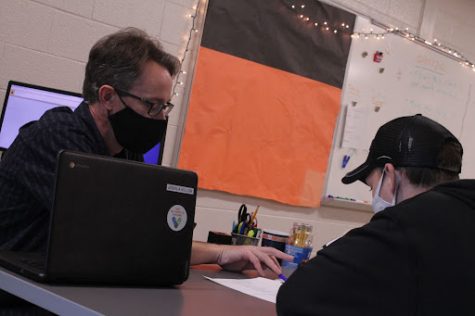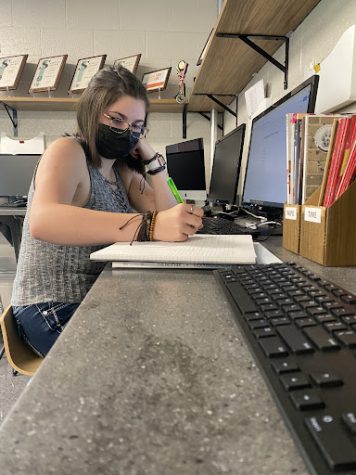A dizzy intersection
Chelsea installs new roundabout for the intersection of M-52 and Werkner Road
Many of us remember the nursery rhyme that goes, “Round and round we go. Where we stop, nobody knows.” Many teens have that state of mind when hitting the newly added roundabout near Chelsea. Since drivers have to keep moving at this sort of intersection, it really sparks curiosity. Is it any better than a traffic-light intersection?
Roundabouts are becoming a popular type of junction in big cities for many different reasons. The safety factor is mostly the point of this circular intersection. As approached, yielding to drivers from the left is the key. Another goal is to slow drivers down, but mainly keep the vehicles moving. According to the police department, the speed limit for the roundabout in Chelsea is 20 mph, making it a careful, organized and flowing intersection.
With roundabouts showing up around several communities such as Jackson, Brighton and Lansing, teens must become more experienced with them. They may even embrace them when they learn that roundabouts help with the rate of fuel consumption and congestion in traffic according to the Michigan Department of Transportation. Most people believe it is more beneficial to have them on the road. In a poll of 30 seniors, only one student wasn’t sure of how to drive through one.
“I think the intent of roundabouts is to keep the traffic moving even though they’re a lot slower,” teacher teacher Steve Allison said. “Vehicles are moving all the time, so they aren’t stopping which reduces wear-tear on the brakes, and it helps with the ignitions.”
Roundabouts have caused a 90 percent reduction in fatality collisions according to the Washington State Department of Transportation.
They may be the the most frequent type of intersection added to busy roads today, especially at intersections where multiple crashes have occurred. The United States does not have as many roundabouts compared to a country such as France, which has over 20,000.
As the trend grows, drivers have mixed feelings about the new type of intersections.
“They might direct traffic flow, but a lot of semis go through the Chelsea roundabout,” senior MacKenzie Goss said. “It’s not safe for them or the people on the roundabout to have this huge semi going around it, and possibly hitting cars, because they can’t slow down or speed up easily.”
Some people who have taken their driver’s tests years ago might have not been tested in one, making it even harder to navigate it their first time.
As more roundabouts start to appear, more people are either growing fond of them or wanting to just drive straight through. Either way, they are probably going to be more regularly installed into junctions all over the state.
“Roundabouts originated in Europe and are the primary intersections there,” said Keith Simons from the Michigan Department of Transportation. “Some states like Michigan adopted this idea of an intersection because of how low the numbers of incidents there are with them.”

I received an invitation to join the newspaper in my ninth grade year around scheduling time. This opportunity led to an experience I never even thought...









